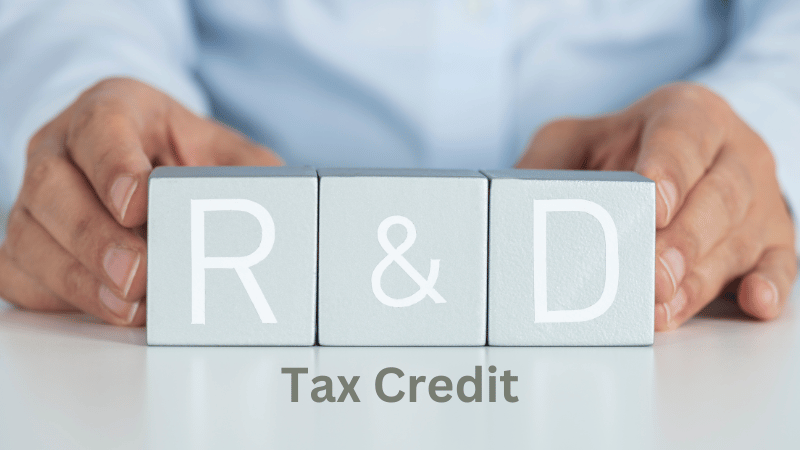R&D Tax Credit: A Comprehensive Guide for Businesses

The research and development (R&D) tax credit is one of the most vital domestic tax credits in the current law, but what exactly is it? What benefits can your company enjoy from this particular tax credit?
Suppose a considerable portion of your company’s budget goes into developing or improving your products. In that case, it might be qualified to receive a significant percentage of your company’s qualified research back through what is known as a Research and Development or R&D tax credit.
To clarify, the R&D tax credit is a credit on your company’s income tax return, not necessarily a deduction on your taxes. What this means is that dollar for dollar, your company can reduce its tax liability, in addition to deducting qualified R&D expenses.
We’ll cover everything you need to know about the R&D Tax Credit, including the eligibility criteria and how to claim and calculate it.
What is the Federal Research and Development (R&D) Tax Credit?

R&D Tax Credit (26 US Code §41)is a federal tax benefit that provides qualified companies with dollar-for-dollar cash savings for research and development activities for software, products, formulas, and processes. This general business tax credit provides companies with much-needed funding to hire additional staff, increase R&D, expand facilities, and more.
Enacted in 1981 with Internal Revenue Code 41, this tax credit was created to foster innovation and encourage investment in development activities in the country. Since then, other countries have made similar tax credit claims.
Usually, 6% to 8% of an organization’s annual qualifying R&D expenses is eligible, dollar for dollar spent against its federal income tax liability. Businesses are allowed to claim R&D tax credit claims retroactively, most of the time, for three years. The time frame could possibly be longer if that organization endured losses during that period.
Hiring scientists or engineers for qualified activities, developing intellectual property, redesigning existing products, and developing processes qualify as R&D expenses. However, these activities need to satisfy the criteria specified by the IRS.
Who Qualifies for R&D Tax Credits?
R&D Tax Credits are generally available to all companies or organizations that engage in activities to develop new technologies or improve them. This accessibility is partially because of the Protecting Americans from Tax Hikes (PATH) Act of 2015. This law broadened small and medium businesses’ ability to monetize the R&D tax relief.
According to the IRS, four criteria are considered to qualify for R&D tax credit:
- Permitted purpose. The activity’s purpose must be to improve the function, reliability, performance, and quality of a process or product.
- Eliminate uncertainty. There should be technical uncertainty. Is there some room for improvement or development for this product or process?
- Experimentation. Experimentation is needed. Testing and analysis must be done because of the uncertainty.
- Technological in nature. The activity should be technological in nature and science-based.
Take this interactive quiz to determine your eligibility for this tax credit: “Is your business eligible for the R&D tax credit?”
Three activities qualify for R&D tax credits, namely:
- Wages of any staff directly supervising or supporting R&D activities.
- Supply costs or expenses involved in experimentation, including prototype development or raw materials.
- Expenses connected with outside services used during the development process
Activities such as research and experimental expenditures outside the country, quality control or maintenance activities, polls or surveys, reverse engineering, and social science or economic research don’t qualify for this tax credit.
How to Claim R&D Tax Credits?

Like the child tax credit, companies must file their taxes at the IRS. For this tax benefit, companies must file IRS Form 6765, Credit for Increasing Research Activities. This process includes identifying qualifying research activities and providing documentation proving these costs meet the requirements specified under Internal Revenue Code Section 41. Companies may use business records, financial records, oral testimonies, and technical documents.
Before you complete this form, you should familiarize yourself with the instructions mandated by the IRS. The PDF version of this form can be easily downloaded from the IRS website.
In general, the IRS Form 6765 has four sections:
- Section A is used to claim the regular credit and contains 11 lines of required information.
- Section B applies to the Alternative Simplified Credit or ASC.
- Section C identifies additional forms and schedules that require reporting based on one’s business structure.
- Section D only applies to qualified small businesses or QSBs making a payroll tax election.
The IRS recommends that companies calculate their credit using both regular and simplified credit methods, and then they fill out the section (A or B) that would result in the greatest tax benefit.
How to Calculate the R&D Tax Credit
In general, companies can explore two methods to calculate this tax credit: the regular research credit (RRC) method or the alternative simplified credit (ASC) method.
The RRC method permits a credit of 20% of a company’s current year qualified research expenses (QREs) over a base amount. This process can be complicated because they must calculate the average annual gross R&D receipts over the prior four tax years.
Meanwhile, the ASC method looks at QREs over the previous three-year period. This method allows organizations that lack the historical records necessary to document their base amount to determine their eligibility and file for the R&D tax credit.
There are four steps in the ASC method:
- Identify and calculate the average QREs for the past three years
- Multiply average QREs for those three years by 50%
- Subtract half of the three-year average (Step 2) from current year QREs
- Multiply the result of Step 3 by 14%.
Potential Benefits of the R&D Tax Credit

Organizations that file R&D Tax Credits can enjoy several potential benefits, including the following:
- Carry forward the credit for up to 20 years
- Create a dollar-for-dollar decrease in one’s r federal and state income tax liability
- Improve cash flow
- Increase earnings per share
- Motivate innovation and improve one’s business component
- Perform look-back studies to identify unclaimed credits for open tax years, which usually cover 3 to 4 years
- Reduce one’s effective tax rate
- Utilize the federal R&D tax credit against payroll tax
Common Mistakes to Avoid
This tax benefit can be enormously helpful, especially to startups. That’s why organizations must avoid common mistakes when filing taxes.
One common mistake involves all the experimental expenditures paid. Companies should correctly identify the tax liabilities that can help them maximize this benefit. Many businesses fail to provide proper documentation to support their claims.
One of the main reasons why companies hire tax professionals is to calculate expenses accurately. Some companies that file their taxes end up misclassifying expenses and miscalculating the credit. While the IRS provides tax information, filing a company’s taxes can be confusing. Seeking professional advice can help companies avoid these common mistakes and maximize this tax relief.
R&D Credit Limitation
A company isn’t allowed to deduct both research costs and claim a research credit for the same expenditures, and double tax credits aren’t allowed. As stipulated in IRC §280C, a taxpayer should reduce the research expenditure deduction otherwise allowable by the amount of the research credit claimed.
Suppose that the organization capitalizes instead of deducting research expenditures, and the research credit for the year exceeds the amount allowable as a deduction for qualified or basic research expenses. In that case, the amount chargeable to the capital account for such costs must be reduced by the excess amount.
However, taxpayers may reduce their research credit instead of lowering their research expenditure deduction or capitalized amount.
Take advantage of R&D Tax Credits
Organizations that take advantage of such tax credits can improve their cash flow and gain many other useful benefits. However, filing one’s taxes can be a lengthy and complicated process. Fortunately, we at Tax Credits can help you navigate the process of filing your R&D tax credit and more. Our team will be with you every step of the way so you maximize all qualified tax benefits.
FAQs
How do I claim my R&D credit on my taxes?
You can claim your R&D credit by filing IRS Form 6765.
How is the R&D tax credit accounted for?
You need to determine five factors: the number of R&D employees, their average salary, state, gross regular federal credit, and gross regular state credit.
What qualifies as an R&D expense?
The IRS considers four criteria for activities to qualify as R&D expenses. These include permitted purpose, eliminating uncertainty, experimentation, and technological in nature.
How much can you save with an R&D tax credit?
With R&D tax benefits, companies can save as much as 6% to 8% of their annual qualifying R&D expenses.
